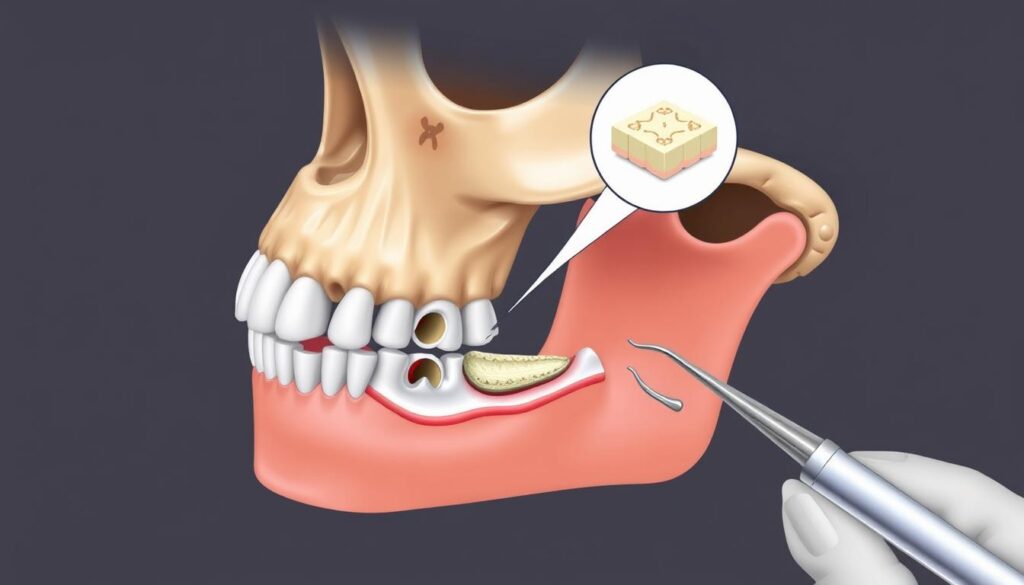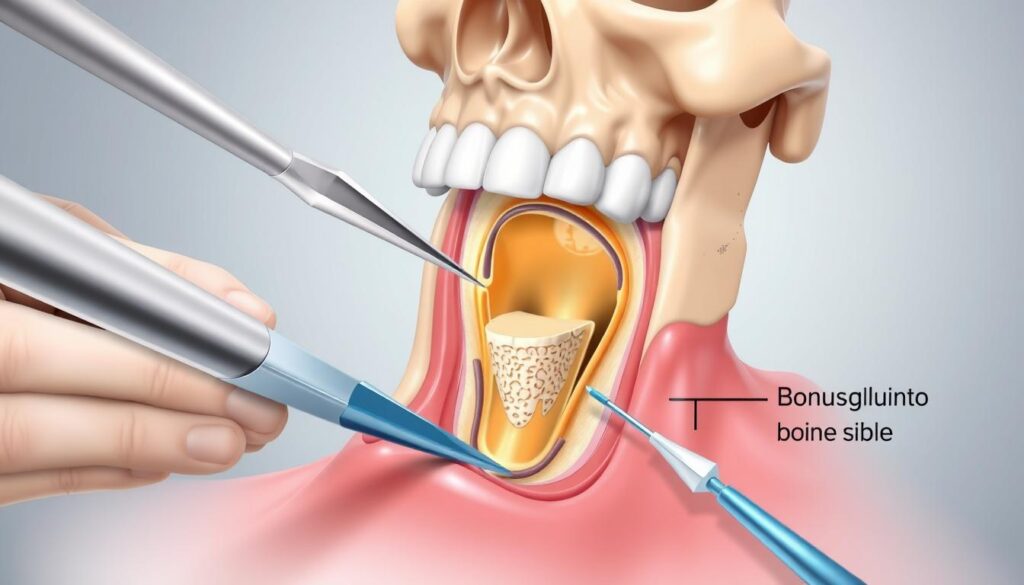
Sinus lifting, also known as sinus augmentation, is a key surgery. It boosts the upper jawbone, especially near the molars and premolars. This area is close to the maxillary sinus, making it hard to place dental implants because of bone shortage.
By raising the sinus floor and adding bone graft, sinus lifting creates a solid base for implants. It's great for those who lost bone due to gum disease, tooth removal, or certain body shapes. This method is vital for bringing back both function and beauty. Oral surgeons and periodontists usually do this, giving each patient the care they need.
With successful sinus augmentation, patients have a better shot at getting dental implants. This leads to better gum health.
Sinus lifting is a key part of implant dentistry. It helps many patients improve their dental health. This method tackles bone issues in the maxillary sinus area.
The goal of sinus lifting is to add bone volume in the upper jaw, near the maxillary sinus. It aims to prepare the area for dental implants when there's not enough bone. This involves lifting the sinus membrane and adding bone grafts for a strong base.
A successful sinus lift boosts the chance of implant success. It helps the implants integrate well into the jawbone.
Those with significant bone loss in the upper jaw are good candidates for sinus lifting. Ideal candidates have healthy sinuses and are generally healthy. A dental health check, including X-rays or CT scans, is needed to assess bone and sinus health.
People with bone loss from tooth extraction, gum disease, or birth defects often benefit. However, smokers or those with chronic conditions may need extra evaluation.

The sinus lifting procedure is a dental surgery that adds bone to the upper jaw. It's needed when there's not enough bone for implants. Knowing about this surgery is important for those thinking about it.
The procedure starts with checking the bone and sinuses. It's done under local anesthesia or sedation. A small cut is made in the gum to reach the bone.
Then, a small hole is made in the bone. The sinus membrane is gently moved up. Bone graft material is used to fill the space.
After the graft is in place, the cut is closed with stitches. This helps the graft heal and join with the bone.
Recovery from sinus lifting takes several weeks. Patients should avoid hard activities and movements that might hurt the area. They'll need to manage pain and take antibiotics to prevent infection.
Regular check-ups are key to track healing. It can take 4 to 6 months for the graft to fully integrate. Only then can implants be placed.
Like any surgery, there are risks with sinus lifting. These include infection, sinus membrane damage, and graft failure. Perforation might need more treatment.
Patients may also face swelling, bruising, or bleeding. These are common but usually manageable. Knowing these risks helps in making the right choice.

The sinus lifting procedure is key for those wanting to boost their upper jawbone. This is vital for dental implant success. It helps patients understand the process and its benefits.
Knowing how to care for yourself after the surgery and managing risks is important. A skilled doctor doing the procedure helps avoid problems. This makes the treatment more effective for bone growth.
Finally, sinus lifting is a step towards fixing smiles. It helps patients get back their smile's function and look. For those thinking about dental implants, knowing about this procedure is crucial for success.
